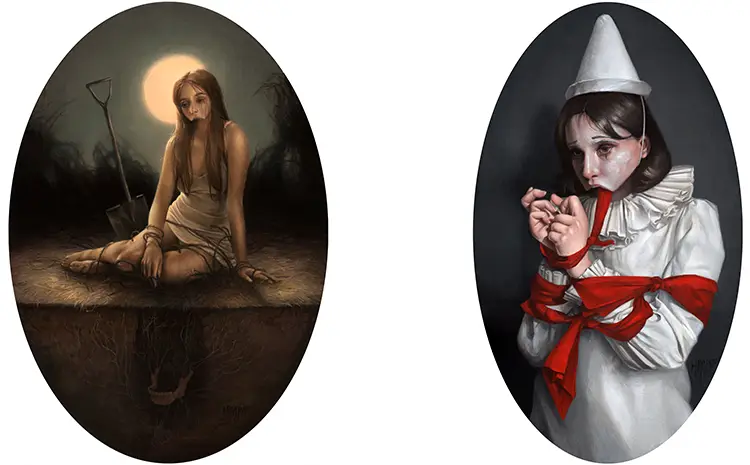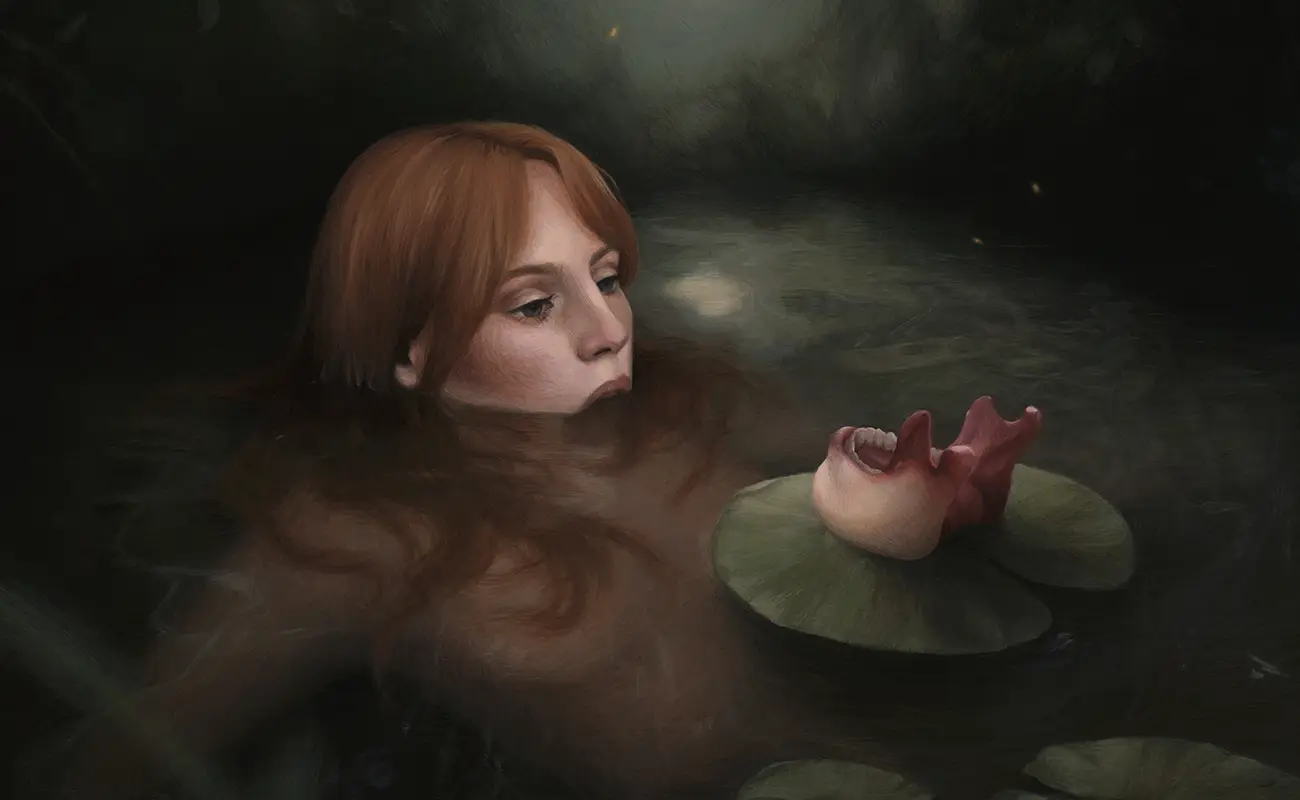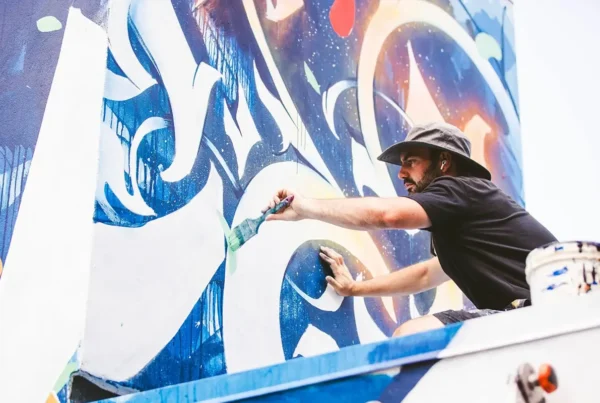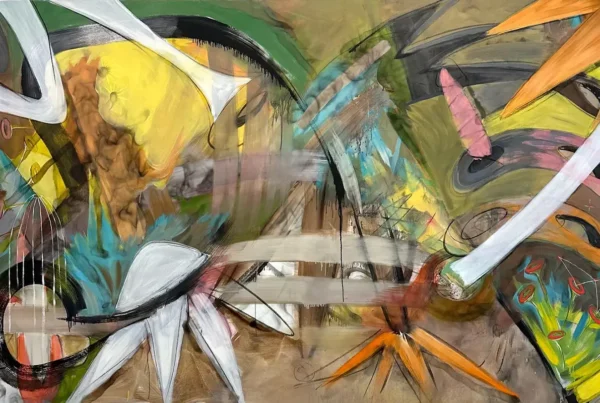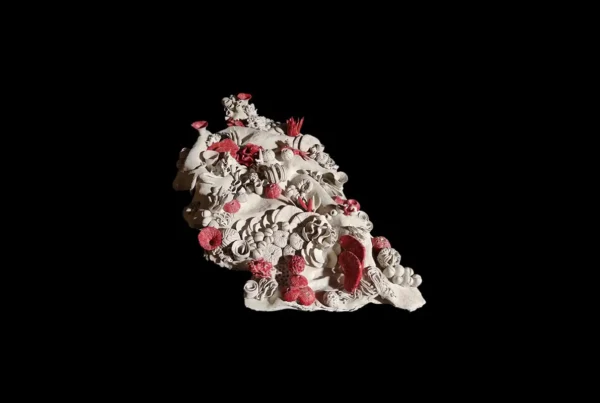“I feel like I express through art what I have a hard time explaining with words.”
Where Loss Meets Creation: The Journey Behind the Canvas
Meagan Magpie Rodgers stands as a compelling voice in the world of dark surrealism, crafting visual narratives that navigate the intricate depths of human emotion. A painter and graphite artist originally from Riverside, California, Rodgers has long channeled her creative energy into artworks that explore the intangible corners of the mind. Now based in Chattanooga, Tennessee, her work has grown increasingly introspective, shaped by personal experiences and the emotional landscapes they unveil. Rather than simply portraying the visible, Rodgers uses her practice to translate feelings and thoughts that often escape verbal expression, allowing viewers to engage with subjects like grief, mental health, and longing through a striking visual language.
Raised in an environment enriched by artistic mentorship, Rodgers was fortunate to have her early passion nurtured by a community of creatives who helped shape her foundation as an artist. This early support not only honed her technical skills but also instilled a deep appreciation for artistic exploration. A pivotal chapter in her life unfolded when a spontaneous road trip led her to Chattanooga, where the region’s lush scenery and tranquil atmosphere stirred a sense of belonging and creative renewal. This relocation, shared with family and her now-husband, offered more than a change of scenery—it became a catalyst for deeper introspection and growth within her artistic journey.
Rodgers’ evolution as an artist cannot be separated from her personal narrative, particularly the profound influence of her brother Zak. His guidance and creativity were instrumental in her development, providing both inspiration and knowledge as she began to navigate her path in the art world. Following his untimely passing, Zak’s memory became a powerful undercurrent in her work, reshaping her focus from external subjects like animals to raw, human-centered themes. This shift marked a turning point where her art transformed into a means of processing loss and articulating the darker facets of the human experience, lending her pieces a layered emotional resonance that continues to captivate and connect.
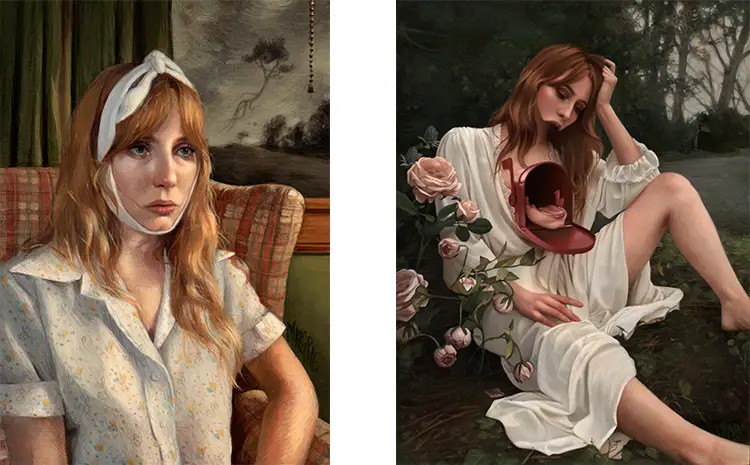
Meagan Magpie Rodgers: Honoring Influence and Embracing Evolution
Rodgers credits much of her early inspiration to her brother, whose artistry and encouragement left an indelible mark on her creative outlook. His mentorship provided not only technical advice but also emotional support, offering a sense of direction during her formative years as an artist. The enduring impact of their bond remains central to Rodgers’ practice, with his influence felt in the emotional weight and thematic focus of her work. Even after his passing, Zak’s artistic spirit remains a guiding force, pushing her to confront and explore the complexities of grief, memory, and healing through her visual storytelling.
Alongside her brother, other significant figures have shaped Rodgers’ artistic voice, including her husband Luis—known professionally as Lewiscrow—and her former painting instructor Jeff Soto. Their encouragement and creative philosophies have offered additional layers of perspective, fostering an environment where Rodgers could refine her style while staying true to her internal vision. These relationships have not only provided artistic guidance but have also reinforced the importance of vulnerability and honesty within creative expression, elements that are vividly present throughout Rodgers’ body of work.
Rodgers’ artistic journey began organically, starting with small commissions and participation in local art walks during her school years. As she continued to develop her unique style and thematic focus, social media platforms and online galleries became valuable tools for sharing her work with broader audiences. Gradually, her career expanded to include gallery exhibitions and a personal online shop, establishing her as a recognized voice within the contemporary art scene. Despite these accomplishments, Rodgers remains deeply connected to the intimate roots of her practice, continually prioritizing emotional authenticity over commercial trends.
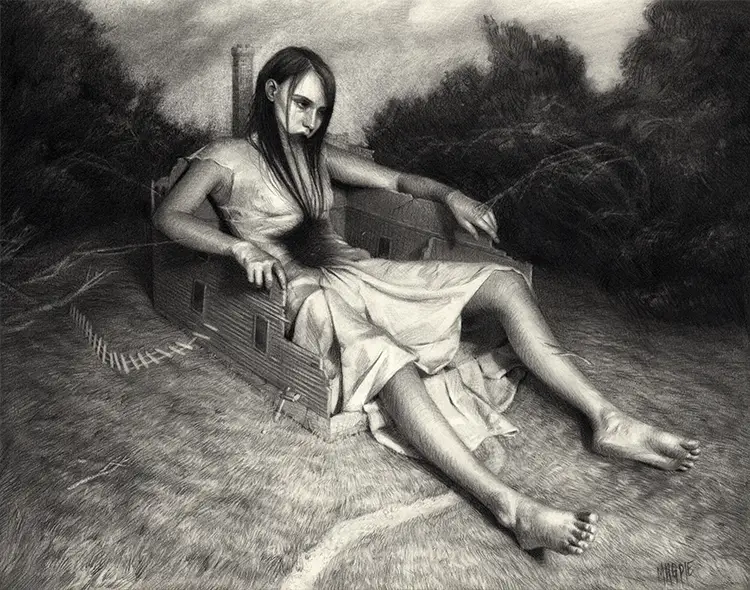
Confronting Silence: Art as Language for the Unsaid
Rodgers describes her artistic style as dark surrealism, a genre well-suited to her focus on inner landscapes and the often-unspoken struggles of the human psyche. Rather than relying on literal representations, she crafts images that embody abstract emotional states, using surreal visuals to give form to experiences like mental illness, grief, and isolation. Her work acts as a conduit for emotions that resist easy articulation, transforming personal vulnerability into shared understanding. Through haunting, thought-provoking imagery, Rodgers invites viewers into a space where discomfort and beauty coexist, challenging audiences to confront the parts of themselves they might otherwise avoid.
One of the most poignant examples of this approach is her piece titled Hollow Refrain. This self-portrait captures the artist with a mailbox embedded in her chest and a jaw resting inside—an evocative metaphor for the yearning to be acknowledged and truly heard. The artwork stands as a powerful expression of emotional isolation and the struggle for connection, encapsulating the raw honesty that defines Rodgers’ creative voice. It is this willingness to confront her own inner battles through visual metaphor that lends her work such emotional potency, resonating deeply with those who encounter it.
The thematic focus of Rodgers’ pieces is mirrored by her creative process, which balances spontaneity with deliberate craftsmanship. Working primarily with acrylics and graphite, she often begins with digital sketches on her iPad, allowing her to conceptualize ideas before moving into the physical construction of her pieces. The process includes crafting her own panels in her basement woodshop, underscoring her hands-on approach and commitment to material integrity. Despite experimenting with other mediums like clay, Rodgers finds that acrylics and graphite offer the most effective tools for bringing her visions to life, enabling the depth of shading and precision necessary to convey her emotionally charged concepts.
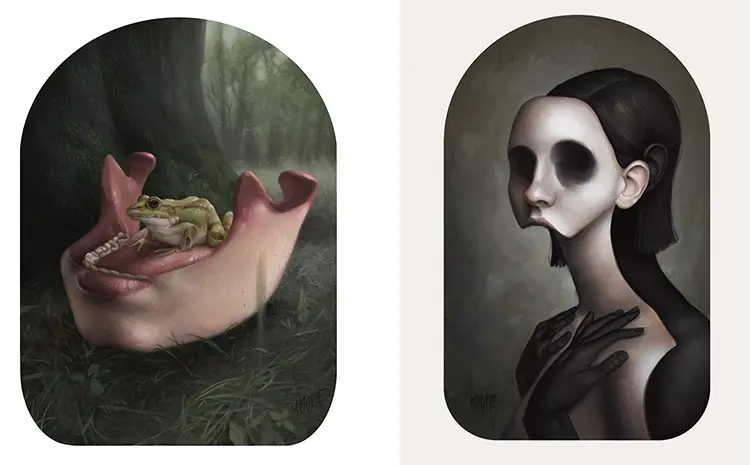
Meagan Magpie Rodgers: Crafting Space for Creativity Amid Chaos
Creating art amid the demands of daily life requires a level of adaptability that Rodgers has embraced with grace and determination. Once accustomed to working in a dedicated studio within her home, she now finds herself gravitating toward spaces like the kitchen or dining area, ensuring she remains close to her young son while pursuing her craft. This shift reflects both the realities of parenting and the artist’s commitment to sustaining her creative practice, even when circumstances call for flexibility. Though the settings may have changed, the focus and emotional depth of her work remain unwavering.
Managing attention and maintaining creative flow present their own challenges, particularly as Rodgers navigates life with ADHD. Recognizing her sensitivity to distractions, she has adjusted her routine to prioritize nighttime sessions, working primarily after her son has gone to bed. These quiet hours offer the solitude and concentration required for her to fully engage with her projects. This intentional structuring of her creative process speaks to her dedication, highlighting the balance she strikes between motherhood, mental health, and artistic expression.
Looking ahead, Rodgers holds an ambitious list of project ideas she hopes to bring to fruition, with a growing desire to experiment further with atmospheric elements and unconventional approaches. Although the demands of daily life can limit the time she dedicates to large-scale pieces, she remains committed to nurturing her creative spirit through smaller projects and continued exploration. This willingness to adapt, combined with her passion for artistic honesty, ensures that her work will continue to evolve—remaining as emotionally raw and resonant as the experiences that inspire it.
